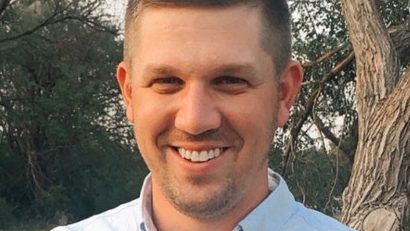By MATTHEW DALY
WASHINGTON (AP) — The Environmental Protection Agency enhanced enforcement efforts this year, significantly reducing pollution in overburdened communities, the agency said in a report Thursday.
Long-delayed Minnesota iron mining project appears to be nearing finish line
Critical habitat proposed for the rusty patched bumble bee in Minnesota
Minnesota lakes have lost 2 weeks of ice cover in 50 years
Research finds widely used insecticide is common in shallow ground water across Minnesota
Blue Earth River pollution soared after Rapidan Dam’s partial failure
The EPA said it concluded more than 1,800 civil cases, a 3% increase over 2023, and charged 120 criminal defendants, a 17.6% increase over the previous year. The “revitalized enforcement and compliance efforts” resulted in more than 225 million pounds of pollution reductions in overburdened communities, the agency said in its final report on Biden-era enforcement actions before President-elect Donald Trump takes office in January.
Bolstered by 300 new employees hired since last year, the enforcement program focused on “21st century environmental challenges,” including climate change, environmental justice and chemical waste, said David Uhlmann, EPA’s assistant administrator for enforcement and compliance assurance. More than half the agency’s inspections and settlements involved poor and disadvantaged communities long scarred by pollution, reflecting the Biden administration’s emphasis on environmental justice issues.
Enforcement efforts included first-ever criminal charges for a California man accused of smuggling climate-damaging air coolants into the United States. The case involved hydrofluorocarbons, a highly potent greenhouse gas also known as HFCs, a gas once commonly used in refrigerators and air conditioners.
The EPA has pledged to enforce a rule imposing a 40% reduction in HFCs as part of a global phaseout designed to slow climate change.
In other highlights, engine maker Cummins Inc. paid more than $2 billion in fines and penalties — and agreed to recall 600,000 Ram trucks — as part of a settlement with federal and California authorities. Cummins was found to use illegal software that let Ram trucks — manufactured by Stellantis — to skirt diesel emissions tests for nearly a decade.
The fine is the largest ever secured under the federal Clean Air Act.
The EPA and Justice Department also reached a $241.5 million settlement with Marathon Oil for alleged air quality violations at the company’s oil and gas operations on the Fort Berthold Indian Reservation in North Dakota. The settlement requires Marathon to reduce climate- and health-harming emissions from those facilities and will result in over 2.3 millions tons worth of pollution reduction, officials said.
Uhlmann, who was confirmed as head of the enforcement office last year, said in an interview that with the help of a spending boost approved by Congress, the agency has made “consequential changes in how we approach enforcement at EPA.”
“We’ve revitalized an enforcement program that suffered more than a decade of budget cuts and and was badly hampered by the (COVID-19) pandemic,” he said. The agency also weathered a series of actions by former President Donald Trump’s administration to roll back environmental regulations and reduce overall staffing.
“We’ve strengthened the partnership between the criminal and civil programs, and we’ve also focused on moving our cases with greater urgency so that we provide meaningful results to communities in time frames that make sense to the people who are harmed when unlawful pollution occurs,” Uhlmann said.
With Trump set to return to the White House, Uhlmann said he hoped enforcement would not suffer, noting that a host of civil and criminal investigations begun in the past two years could bear fruit in 2025 and beyond. Trump, who has named former New York Rep. Lee Zeldin to be EPA administrator, has said he will again slash regulations and target what he calls onerous rules on power plants and oil and natural gas production.
Uhlmann declined to speculate on how enforcement will change under Trump but said, “Upholding the rule of law and making sure that polluters are held accountable and communities are protected from harmful pollution is not a partisan matter. We do enforcement at EPA based on the law, based on the facts, without regard to politics.
“So, you know, communities should expect that EPA will continue to protect them from harmful pollution.”




